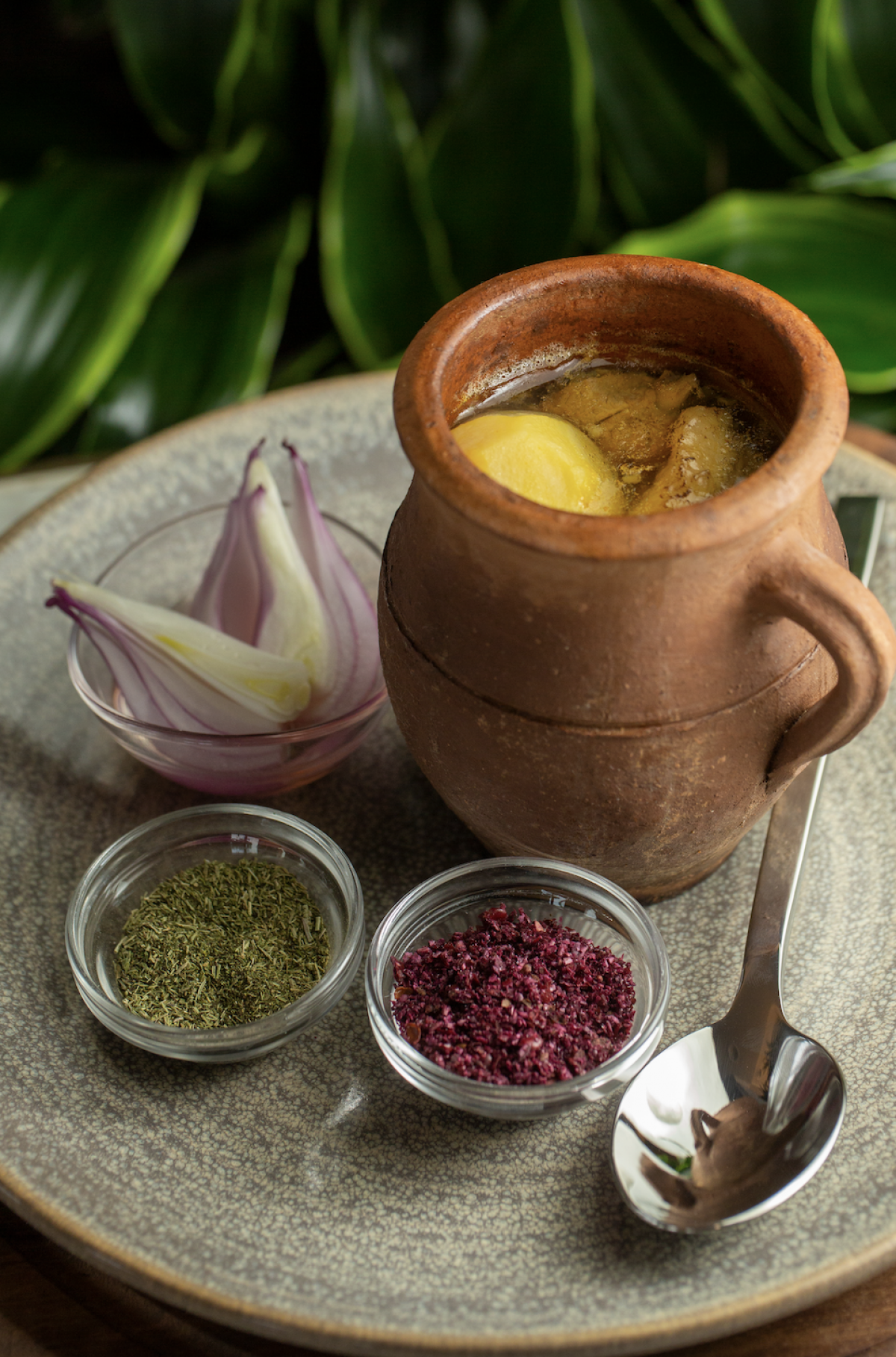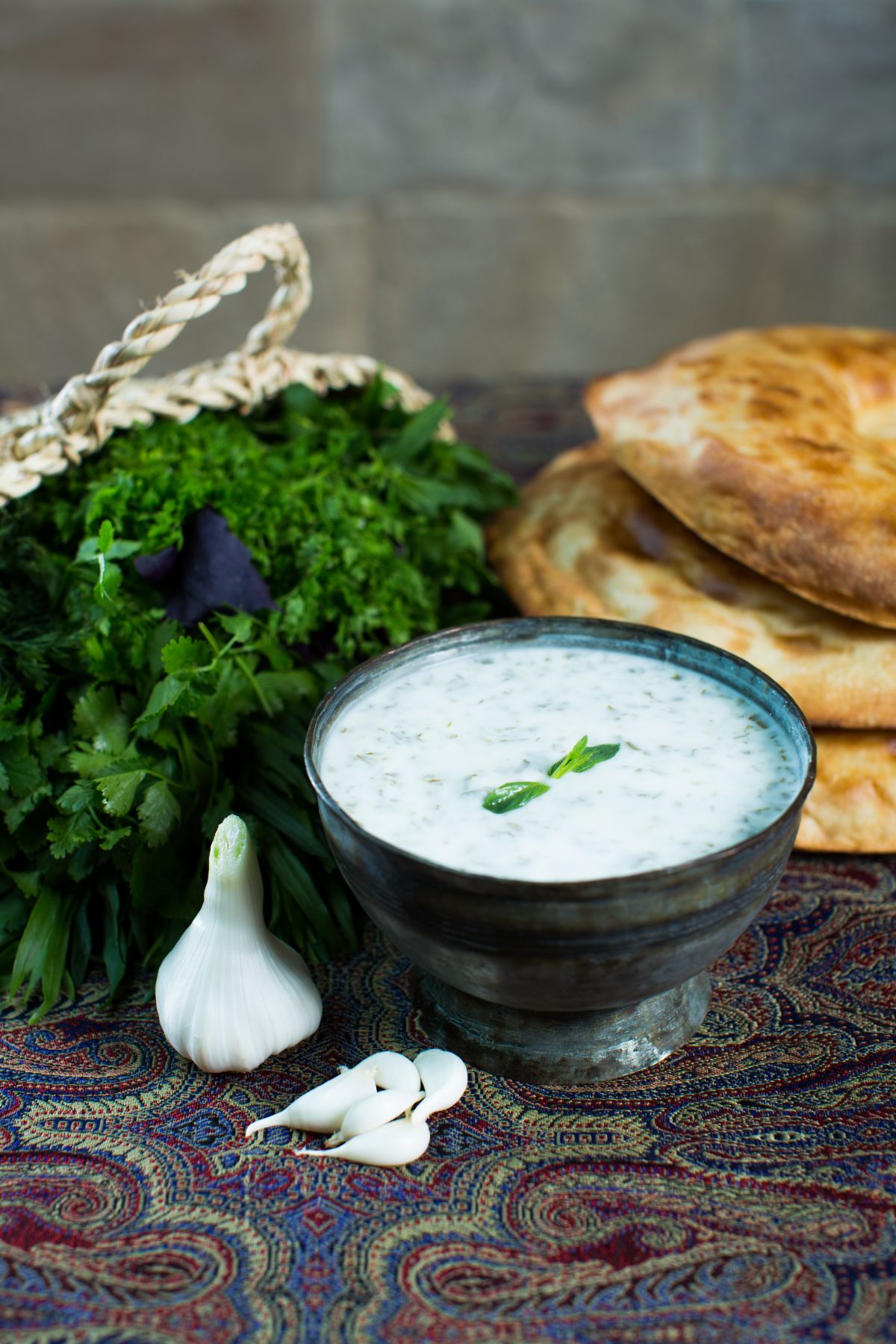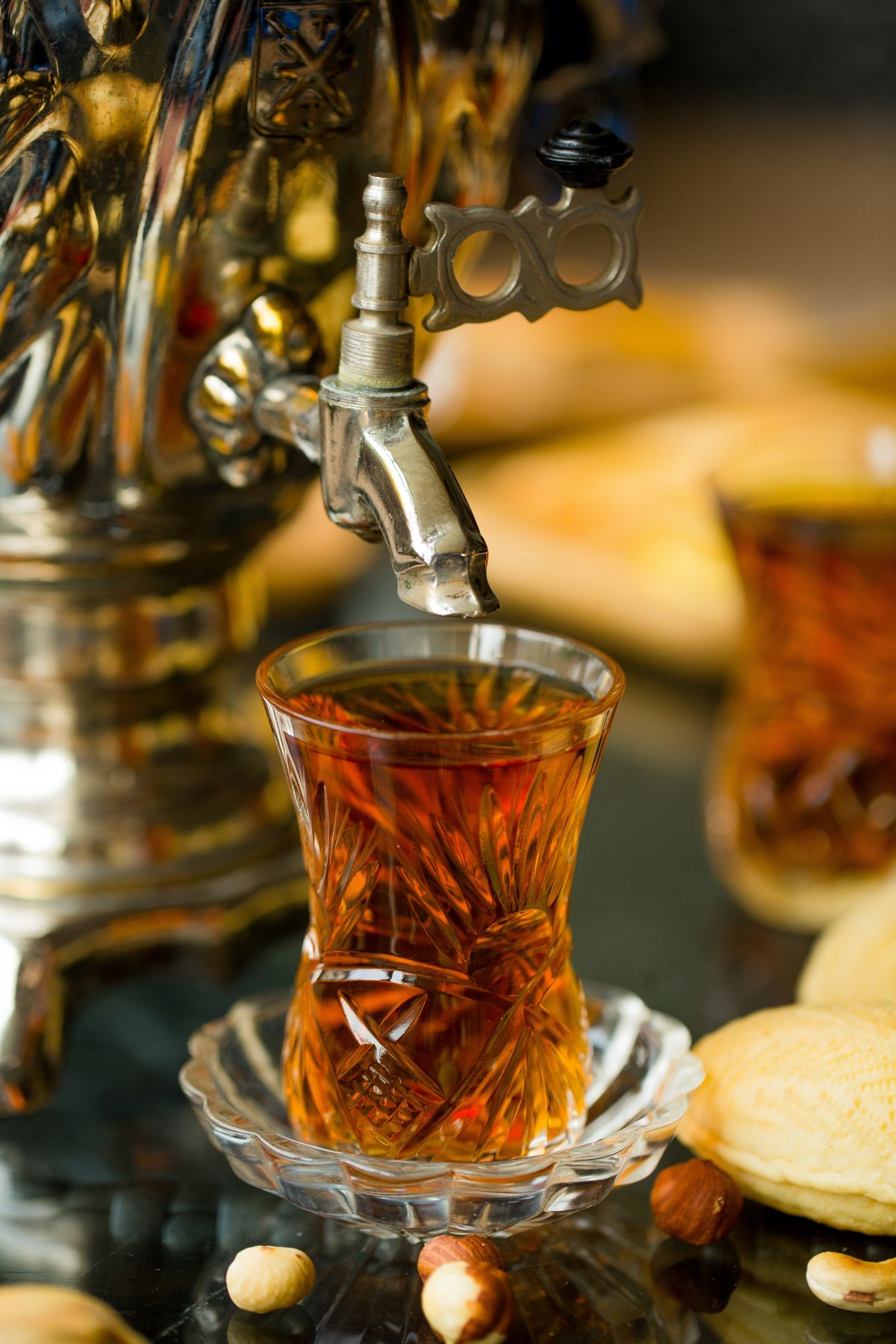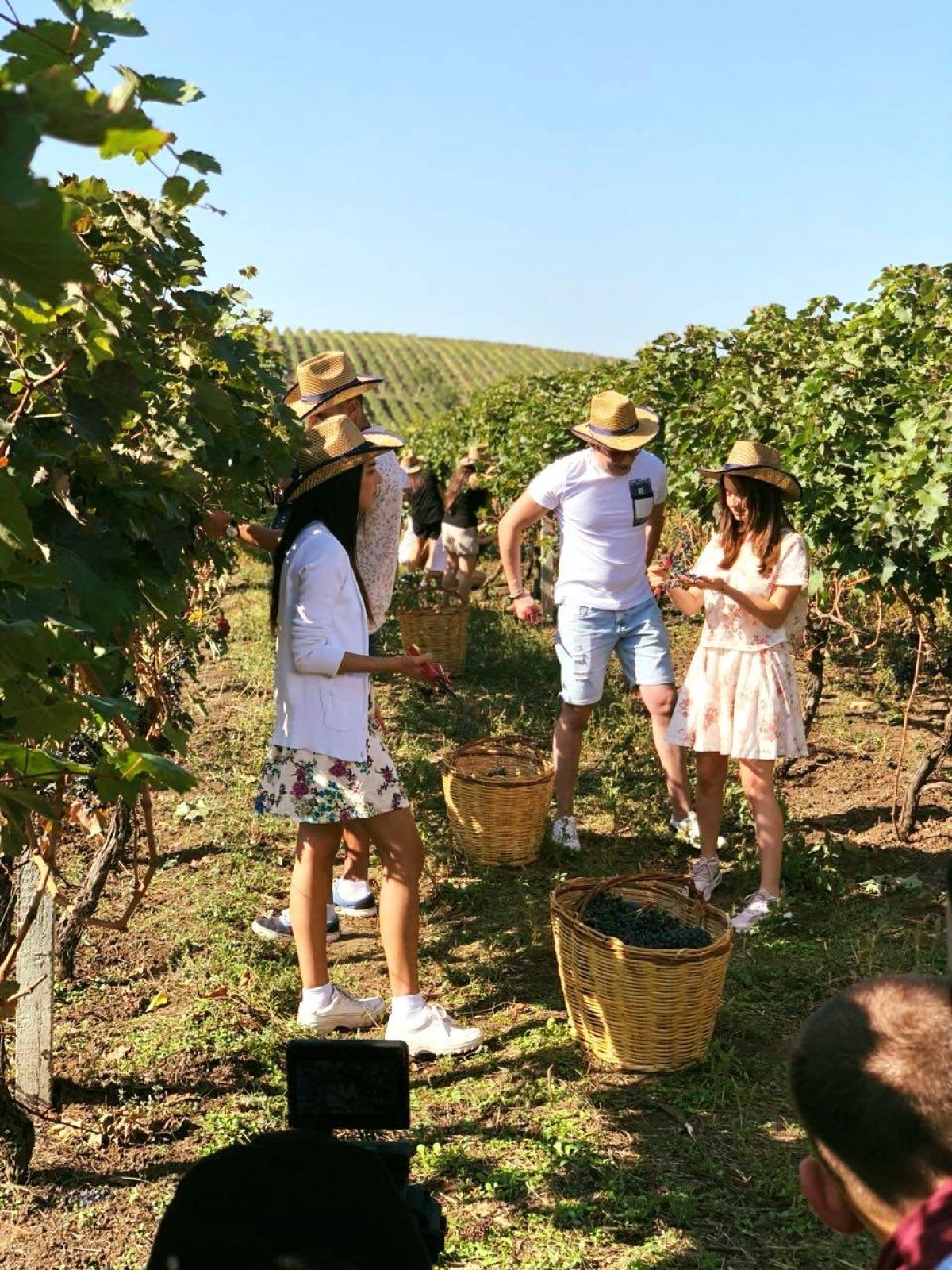Get Premium access to all the latest content online
Subscribe and view full print editions online... Subscribe
A versatile country undulating between the Caucasus Mountains and the Caspian Sea, Azerbaijan’s gastronomic offering is as inviting and varied as its landscape, grounded in tradition and enlivened by an emerging wine scene. Take the Slow Food route through a destination famed for its culinary variety and hospitality, via heritage dishes, provenance-first ingredients and a vibrant drinks culture

A taste of modern heritage
Sitting at the confluence of cultures on the historic Silk Road, Azerbaijan’s cuisine is informed by its fascinating past. Add to that a bountiful natural larder nurtured by nine climate zones and you’ve got something really special. Distinct regional food traditions are highly prized and shared with visitors, inspiring an enchanting, flavour-filled journey through a diverse land.
Within the world of Azerbaijani cuisine, plov and dolma are classics, showcasing the country's culinary richness and the artistry of its people. Let’s start with dolma, a dish traditionally made from grape leaves stuffed with various fillings of meat and rice, enriched with herbs or nuts – the ingredients vary from region to region and roll with the flavours of the season. Then there’s the iconic plov, a fragrant masterpiece crafted from a delightful blend of rice, herbs, meat or fish, and often complemented by dried fruits and golden-hued saffron. Each variation of plov carries a distinct regional identity, with ingredients and preparations that vary significantly across the country. Take fisinjan, featuring ground meat and a pomegranate and nut sauce, or shirin plov, heavy on the dried fruit. Then there’s shah plov, which sees the rice encased in buttery lavash bread. In Lankaran, you’ll find it enriched with lentil and pumpkin, while in Karabakh, dill is the lead herb. Different cooking techniques and rices (sadri and akule are typical) yield different nuances throughout, offering a world of flavour to discover.
Azerbaijanis have long mastered the art of the barbecue, matching taste and texture expertly and allowing each dish to tell the story of the rich cultural heritage of the region. Skilful cooking techniques bring everyday dishes to life – once sampled, you'll never forget the tenderness of kebabs such as lamb tike, or lula, made with ground meat or chicken, grilled mangal-style for extra succulence. Another favourite, qutabs, are flatbreads stuffed with meats, cheeses, herbs or greens and cooked on a saj (iron disc), sometimes rolled up and eaten by hand and always bursting with flavour. In the Absheron region they like to drizzle their qutabs with melted butter and serve them with pomegranate and yoghurt, or sometimes sumac for the ultimate savoury hit.
There’s a bone fide litany of flavour at every juncture, from piti (Sheki’s signature lamb stew with chickpeas, dried cherries and saffron) and dushbara soup with little meatballs served with a vinegar and garlic sauce, to the Caucasus’ tskan meat pies and Gusar’s shakuka (a flavoursome bread-oven flatbread). Nakhchivan favours tender lamb-based qovurma shorbasi – with the qovurma preserved underground in earthenware pots in the time-honoured way – and sweet almond-rich badambura (a flaky pastry with redolent cardamom).

Take the slow road
With so many ingredients produced exclusively in specific pockets of the country, the intricacies of regional traditions are just waiting to be explored. This valuable heritage is something the Slow Food movement (together with its Cooks' Alliance) are helping to preserve, and their travel routes are designed to navigate visitors to the heart of it all, meeting local producers and visiting vineyards along the way.
Your journey may lead you to discover the Caucasian rosehip, which grows abundantly in the forested Girdimanchay valley and is harvested by families who crush then filter the pulp to make syrups and compotes. Caucasian buffalo farming has been practised in Azerbaijan since ancient times, with farmers processing the milk into butter, yoghurt, cream and cheese as well as prizing the meat for use in traditional dishes as well as jerky-style gakhaj (though this is typically made with ram meat or sometimes goat); Slow Food promotes wild buffalo pasturing and traditional grazing techniques. The mountains and hills are also ideal for the wild beekeeping tradition of tekne, which replicates the natural habitat of tree-dwelling bees. The Caucasian Mountain Grey honey bee gets nectar from a wider variety of flowers and in larger volumes thanks to its uncommonly long tongue, and the resulting, intensely fragrant honey is dark and dense.
Ata-baba hazelnuts (found between Gakh and Gabala and the north-eastern region), are valued for their curative qualities and sweet, oily taste; left to dry for around 15 days, they are widely eaten as a dried snack or used in the likes of pakhlava, and the shells are kept as a natural alternative to firewood. Follow the trail to mountain villages in Shamakhi and Ismailli districts too for a taste of madrasa grapes, trellised and harvested manually to produce wines with flavours of wild berries.

Market force
While Baku’s sky-tickling architectural marvels like the Flame Towers might be emblematic of a modern city, this vibrant hub remains a gem of the Silk Road. And Yashil Bazar – one of the city’s oldest, largest and most renowned markets – encapsulates its trajectory with a cornucopia of ingredients, scents and flavours that not only heroes the country’s heritage foodways, but showcases the producers and artisans that are driving it forward. The city’s bazaars have remained at the heart of local food culture since annals first began drawing farmers with produce fresh from the Caucasus and the Caspian Sea.
Whatever you’re looking for, stalls heavy with produce will ensure you find it. Nuts from the north-west region, fruits from Nakhchivan, mountain honeys, fragrant spices and herbs – cinnamon, Absheron saffron, sumac, cardamom, cloves, dill, thyme, mint, coriander – all have an essential place in the Azerbaijani kitchen. Chefs and home cooks browse for ingredients to use in much-loved pakhlava (diamond-shaped layers of dough, stuffed with nuts and coated with honey or syrup), dovga (a yoghurt-based herb soup), plov and tike kebab. Fresh vegetables and greens pile high ready to be whipped up into the likes of choban salads, while fresh seafood (including sturgeon), lamb and local cheeses are omnipresent. You’ll even find caviar, often enjoyed as a starter. Then there’s bread – a sacrosanct item on Azerbaijani tables seen in myriad forms – lavash, xengek, shirin chorek, tendir – with baking traditions as old as time. For a true sense of local culinary colour, you’ll be hard-pushed to find anywhere to top it.

The national drink
From refreshing, fragrant sherbets laden with fruit, spices and herbs, to cooling yoghurt-laced ayran, best served with qutabs, meat dishes and plovs, and Azerbaijan’s iconic pomegranate juice – a tart-yet-sweet ruby wonder, particularly prevalent across Goychay, which even hosts an annual pomegranate festival – there’s a drink to charm all palates. But when it comes to drinking rituals, nothing comes close to the reverence given to tea.
Part of the bedrock of Azerbaijani gastronomy, chay (tea) is more than just a drink. Synonymous with warmth and hospitality, and served in a special pear-shaped glass (to keep it hot for longer) known as armudu, the ceremonial treatment of tea comes laden with as much meaning as it does flavour. As a part of the cultural process of communicating and forming friendships, tea is always served first to guests. Typically it’s black tea – which grows abundantly in Lankaran, home to the country’s first tea plantation.
The tea-making ritual is performed with much care and attention to detail. A generous portion of dry tea leaves is added to a pre-warmed porcelain teapot, then hot water is poured to one-third of its capacity, which helps capture the full flavour and subtle nuances of the leaves. It is then left to brew for 5-10 minutes, nestled in a towel to keep it hot. The result is a rich, aromatic infusion. Azerbaijanis usually drink it as it comes, but you can also expect interesting variations using herbs and aromatics – cloves, thyme, or the delicate essence of rosewater may add an extra layer of fragrance.
And while it’s sipped both before and after meals, it is often served alongside a table of sweet delicacies – the likes of dried fruits, walnut, cherry or rose jams (gulkand), pakhlava stuffed with nuts, nabat sweets and chopped lemon and sugar (kallagand). Tradition dictates that sugar is not added to the tea itself; rather, the tea is sipped before the sugar piece atop is dipped and bitten separately.
Part of the quotidian pleasures of life in Azerbaijan, it also plays its part in the most special of times too – in particular during elchilik and heri ceremonies, when a groom’s family asks the future-bride’s family for the approval of their marriage. Once family members agree to the marriage proposal, it is customary for the bride-to-be to serve sweet tea to the guests.

Word on the vine
The country may be widely known for its unique pomegranate and quince wines, but Azerbaijan is in fact an ancient cradle of viniculture – indeed, archaeological digs across areas such as Nakhchivan, Gabala and Goygol have unearthed terracotta wine jugs dating back to the 2nd millennium BC. The historic regions fan out from Baku through the foothills of the Caucasus north-west to Shirvan; through central Ganja; north along the Caspian coast and south to Karabakh and Lankaran-Astara, with pockets focused on revitalising modern wine production dotted throughout.
Aznar winery, for instance, has long held an international reputation for its delicious pomegranate juice, but its position on the southern slopes of the Main Caucasus range, favoured by sunny days and cool nights, also makes it ideal for optimum grape ripening, and in recent years its premium Grante wines, ranging from semi-sweet shiraz to dry, intensely aromatic white Rkatsiteli, have become increasingly popular.
The sunbathed vines of rolling terroir south of Gabala, offer up Savalan's characterful spicy reds and floral whites; in Shamakhi, one of the newest wineries, Meysari, uses grapes such as grenache, carignan and mourvèdre in its sophisticated, organic dry reds and whites; while the ever-popular Azgranata is known for its easy-drinking, premium table wines as well as uniquely tart, fruity pomegranate varieties. There’s even Over in the west, Tovuz Baltiya's cellars include the unmissable semi-sweet, amber-coloured Manat Gold quince wine, best served with chocolate, cake or ice cream.
The first major vineyard – Goygol Winery – came to life in the late 19th century in Goygol. The brainchild of German settlers, it is considered the birthplace of Azerbaijan’s winemaking industry and is still producing wines from 13 varietals – from delicate dessert wines to gutsy reds – along with local brandy, all of which are sampled in the original German cellar.
Today, Caucasian slopes yield balanced wines from endemic grapes bathed in sunshine and tickled by Caspian breezes for a true taste of terroir. And there’s a host of contemporary wineries enlivening the scene – with some producing sparkling wine, too – and bringing the industry bang up to date following a country-wide initiative that saw wide-scale replanting and the introduction of international varietals alongside regional experimentation of native grapes to drive forward quality over quantity. The result is an exciting picture that pays homage to centuries-old technique and modern innovation.
So, where to try it for yourself? While wine routes draw the modern traveller, Baku’s popular wine bars showcase the country’s bins proudly, and vineyards fling open their cellar doors for oenophiles. Take Sharg Ulduzu near Shamkir, whose renewed vines – a mix of hardy Azerbaijani, French and Georgian grapes – dot the landscape like a work of art, and tastings of their dry reds and low-alcohol semi-sweet wines come with tasty snacks representative of the region. Or Chabiant’s Chateau Monolit, close to Lahij – a village known for its local delicacies and traditional copper crafts and silks – and backed by snow-capped mountains, which offers not only an excellent tasting room highlighting regional grapes such as bayan shirey, but also a welcoming guesthouse with a scenic pool. A sure-fire reason to raise a glass to wine country, if you ask us.
Gain fascinating insight into the cuisine and culture of this historic region and plan your own voyage of discovery here – now’s the time to experience Azerbaijan.
Sponsored by Azerbaijan Tourism Board

Subscribe and view full print editions online... Subscribe